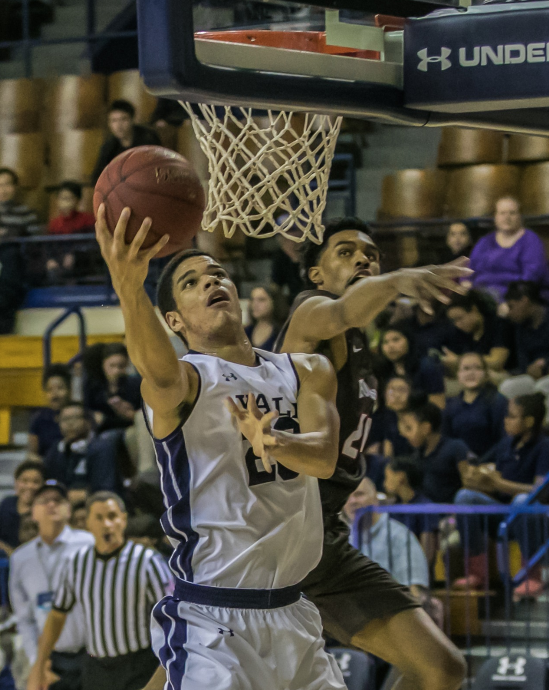
Yale Athletics
There is no better way to start off a conference season than with a win. But after an unconvincing victory over Brown to open the Ivy season, the Yale men’s basketball team will look to cement its good start with a more dominant showing in Providence tonight.
In the second leg of its annual home-and-home series with the Bears (7–7, 0–1 Ivy), Yale (8–9, 1–0) looks to leave behind a sloppy, 20-turnover performance that made its conference opener more competitive than it should have been down the stretch. With a focus on controlling the paint and containing the Bears’ explosive offense, the Bulldogs will look to improve to 2–0 in conference play before returning home to face Harvard (6–10, 1–0) next weekend.
“You think about playing teams back-to-back, obviously you’re going to be a little bit more familiar with what you’re doing because you just played them last week,” Yale head coach James Jones said. “It’s always interesting to play [Brown] the second time, but we’ve been fortunate the last three years to win both games, and we hope to do the same this year.”
To halt the Elis’ winning streak, Brown will need to limit the damage the Bulldogs can do in the paint. In last Friday’s 78–72 victory, the frontcourt tandem of Blake Reynolds ’19 and Paul Atkinson ’21 helped Yale post a 42–24 advantage in points in the paint and a 39–28 edge in total rebounding.
An emphasis on rebounding and running the offense through the post are trademarks of Jones’ teams, and in recent years the big-man mantle has been passed down from Brandon Sherrod ’16 and two-time Ivy League Player of the Year Justin Sears ’16 to Sam Downey ’17 last season. When forward Jordan Bruner ’20 tore his meniscus before the season, it added to the pressure on Reynolds to step into the role Downey once played and thrust Atkinson into the starting lineup on short notice.
As a result, Yale does not currently lead the Ancient Eight in rebounding margin as it has for the past six seasons. Yet Atkinson has quickly grown accustomed to the Ivy game, averaging 9.5 points and 4.6 rebounds per contest and has shot an efficient 24–29 over his last six games.
“I’m just being able to take in more of what my coaches are saying and what they’re asking for, defensively and offensively,” Atkinson said. “It’s coming along, but I’m just trying to get better every day.”
This inside-out approach created open looks for Yale shooters a week ago, but they shot under 30 percent from long range. The Elis could look to the deep ball to create some breathing room against a gritty Brown team, but it will not be easy, as the Bears are among the Ivy League’s best at defending the three-point arc.
While better shooting from the three-point line will be a point of emphasis for the Yale offense, better shooting from the free-throw line will hold the key for the Bears’ attack. Brown has made 35 more free throws this season than Penn, the next-closest Ivy League team, in four fewer games played, and sophomore guard Brandon Anderson ranks in the top 20 nationwide in hits from the charity stripe.
But in the Ivy League opener, Brown shot a season-low 58.1 percent from the line and missed a free-throw that could have tied the game in the final minute. The Bears’ 13 missed free throws more than doubled their eventual margin of defeat.
“Certainly it’s not crazy to think there were some jitters, with our young guys especially, but we’ve got to figure it out,” Brown head coach Mike Martin said. “We’ve been one of the leading teams in the country in getting to the free-throw line the last few years and again this year. We play a style — the way we cut, the way we set screens off the ball — that puts a lot of pressure on defenses.”
Yale certainly felt that pressure in the first meeting, in which it committed 27 fouls. Keeping the Bears, who boast the second-highest scoring average in the Ancient Eight, in check, will start with keeping Martin’s team off the line.
Another important defensive task will be trying to corral the dynamic offensive duo of Anderson and Desmond Cambridge. Anderson and Cambridge rank second and seventh in scoring in the Ivy League, with 19.2 and 15.9 respectively. Unsurprisingly, they led the way against the Elis last Friday as Brown’s two leading scorers.
Both players shot the ball poorly, at clips of less than 50 percent from the field, but they still combined for 37 points as the volume shooters hoisted up a total of 32 shots. Nevertheless, if Yale’s cohort of perimeter defenders, led by Trey Phills ’19, can force another inefficient game out of Brown’s top threats, the Bulldogs will have a good shot at notching a second conference win.
“[Against Anderson and Cambridge] it’s really just to get them out of their comfort zones when they’re playing,” Phills said. “Those guys take a lot of shots, 15 plus shots a game, so if you can just get into them physically, they’ve shown to be a little less successful.”
Offensively, the Elis were able to score without much resistance against a small Brown defense and will try to emulate that success on the Bears’ home court. Yale succeeded in the conference opener by sharing the ball, as it has all season, to the tune of 19 assists, but the Bulldogs also committed 20 turnovers. Improving this assist-turnover ratio will prove crucial to defeating Brown a second time.
Brown last beat Yale on Jan. 25, 2014.
Won Jung | won.jung@yale.edu
Steven Rome | steven.rome@yale.edu







